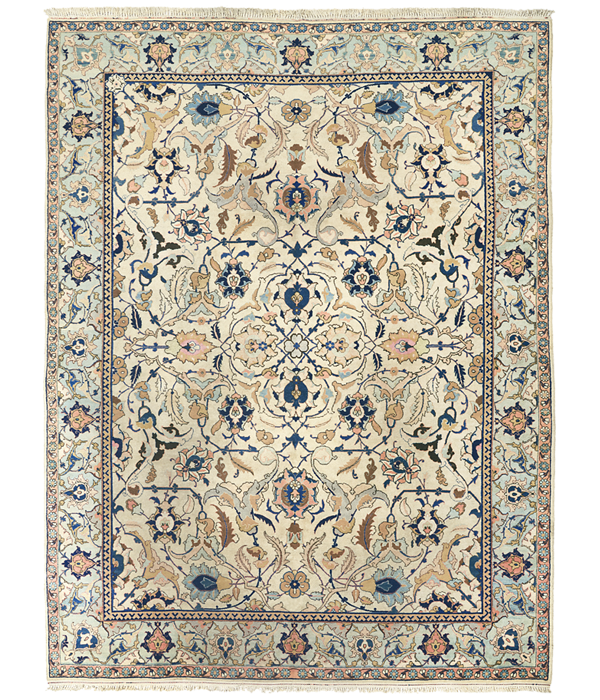
A rare Benlian Polonaise Tabriz carpet
Persia, circa 1920s. Signed with the Benlian workshop mark.
11ft 10in x 9ft 2in : 360cm x 278cm
Provenance: Raine, Countess Spencer.
In 1598, Isfahan became the new capital of Persian when Shah Abbas I (1571–1629) moved his Safavid government there. A new palace complex was built as well as a grand bazaar and numerous mosques. To achieve this program he relocated the Armenians from the city of Julfa, to a neighborhood in Isfahan called New Julfa, they helped as skilled craftsmen and as merchants ushering in a golden age, Isfahan became a city of beauty, of arts and also a thriving economic centre. The Shah set up state workshops for carpet weaving these were exported to European clients and he gave the Armenians the monopoly on silk exports, which they controlled.
The design is after those from the Polonaise carpets of Isfahan, these were silk products with lavish use of gold and silver threads and were popular in Europe during the 17th century and complimented the furnishings of the palaces and great Baroque houses being built. The term Polonaise is after numerous examples were found in Poland, some commissioned with heraldic shields and thus mistakenly assumed to have been woven there.
In the first quarter of the 20th century, Edward Benlian, a merchant based in London, established a workshop to make exceptional carpets recreating classical Persian Safavid designs for the European market, the Polonaise design is one of his most satisfying and rare works with a harmonious balance of colour.